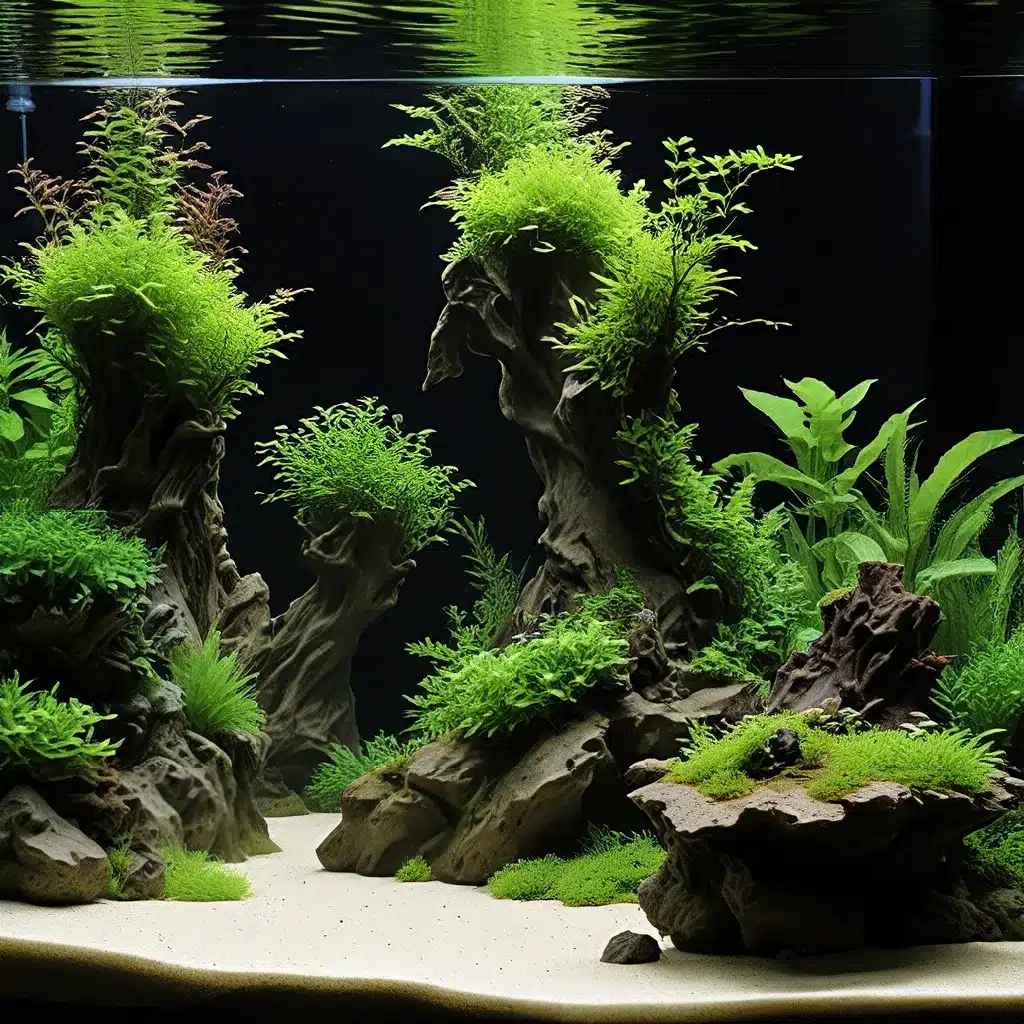
Unlocking the Beauty of Aquatic Art
Have you ever marveled at the stunning, almost otherworldly beauty of a professionally-crafted aquascape? These aquatic masterpieces seamlessly blend the vibrant colors and captivating textures of aquatic plants, rocks, and driftwood to create living, breathing works of art. Aquascaping, the art of designing and maintaining aesthetically-pleasing aquarium environments, has evolved into a true passion for many hobbyists and enthusiasts.
Aquariums are no longer mere vessels for housing fish – they have become platforms for artistic expression, where the aquascaper’s vision and attention to detail transform a simple glass box into a captivating, immersive landscape. Much like a painter’s canvas or a sculptor’s medium, the aquarium serves as a canvas for aquascapers to showcase their creativity and technical prowess. By carefully arranging and cultivating aquatic flora and fauna, they can evoke emotions, tell stories, and transport the viewer to enchanting underwater realms.
The Aqueous Art Movement
The rise of the “Aqueous Art Movement” has brought aquascaping into the spotlight as a legitimate art form, captivating audiences well beyond the typical aquarium enthusiast. Professional aquascapers have begun displaying their masterpieces in art galleries, where they are celebrated for their ability to harness the living elements of nature and transform them into visually stunning, thought-provoking compositions.
These aquascaping art exhibits have piqued the interest of art lovers and the general public, who are often amazed to discover the level of artistry and skill involved in crafting such breathtaking underwater landscapes. The crisp, modern aesthetic of the aquascapes, combined with the vibrant colors and intricate textures of the aquatic plants, create a mesmerizing fusion of nature and technology that captivates the senses.
Aquascaping as a Meditative Practice
For many aquascapers, the act of designing and maintaining their aquarium is more than just a hobby – it’s a form of meditation, a way to connect with the natural world and find a sense of calm amidst the chaos of daily life. As one aquascaper shares, “Rather than taking long strolls amongst thick forests or awe-inspiring mountain scenes, there aren’t many of those in South Florida, I stare into the eyes of nature through nature aquariums.”
The process of aquascaping requires patience, attention to detail, and a deep understanding of the delicate balance between the living elements within the aquarium. Aquascapers must carefully consider the interplay of light, water flow, nutrient levels, and the unique growth patterns of aquatic plants to create a harmonious, thriving ecosystem. This meticulous approach, combined with the soothing visual elements, can have a profoundly calming effect on the aquascaper, transforming their aquarium into a personal oasis of tranquility.
Exploring Aquascaping Styles and Techniques
The world of aquascaping is vast and diverse, with a wide range of styles and techniques that aquascapers can explore to express their unique vision. From the natural, overgrown aesthetic of the “Iwagumi” style to the bold, minimalist appeal of the “Dutch” style, each approach offers its own set of challenges and rewards.
One popular technique that has gained traction in the aquascaping community is the use of bonsai driftwood to create stunning, tree-like structures within the aquarium. These carefully curated pieces of driftwood, often twisted and contorted, serve as the foundation for lush, cascading plant growth, evoking the feeling of a miniature, underwater forest. The contrast between the rugged, weathered driftwood and the vibrant, softly-swaying plants creates a captivating visual harmony that can truly elevate an aquascape to a work of art.
Embracing the Challenges of Aquascaping
While the end result of a well-executed aquascape may appear effortless, the journey to get there is often filled with challenges and setbacks. Aquascapers must navigate the complexities of water chemistry, nutrient balancing, and plant selection to ensure the long-term health and aesthetic appeal of their creation.
Maintaining a thriving, visually-stunning aquascape requires a deep understanding of aquatic plant physiology, lighting requirements, and effective filtration techniques. Aquascapers must constantly monitor and adjust their setups to address issues such as algae growth, nutrient deficiencies, and fluctuations in water parameters. This dedication and attention to detail is what sets apart the truly skilled aquascapers from the hobbyists.
Incorporating Aquascaping into Your Aquarium
If you’re inspired to transform your own aquarium into a work of art, there are a few key considerations to keep in mind. First and foremost, prioritize the health and well-being of your aquatic inhabitants. While the visual appeal of the aquascape is important, the needs of your fish and plants should always take precedence. Carefully research the appropriate species, water parameters, and care requirements to ensure your aquarium thrives.
Once you have a solid foundation for your aquarium, you can begin to explore the world of aquascaping. Start by experimenting with different plant arrangements, rock formations, and driftwood placements to find a layout that speaks to your personal aesthetic. Don’t be afraid to try new techniques and styles – the joy of aquascaping lies in the journey of discovery and the constant pursuit of visual perfection.
Remember, the beauty of aquascaping lies not only in the final result but also in the process of cultivating and maintaining a living, breathing ecosystem. Embrace the challenges, celebrate the small victories, and find solace in the meditative act of tending to your underwater oasis. With patience, creativity, and a deep appreciation for the natural world, you can transform your aquarium into a captivating work of art that inspires awe and wonder in all who behold it.

